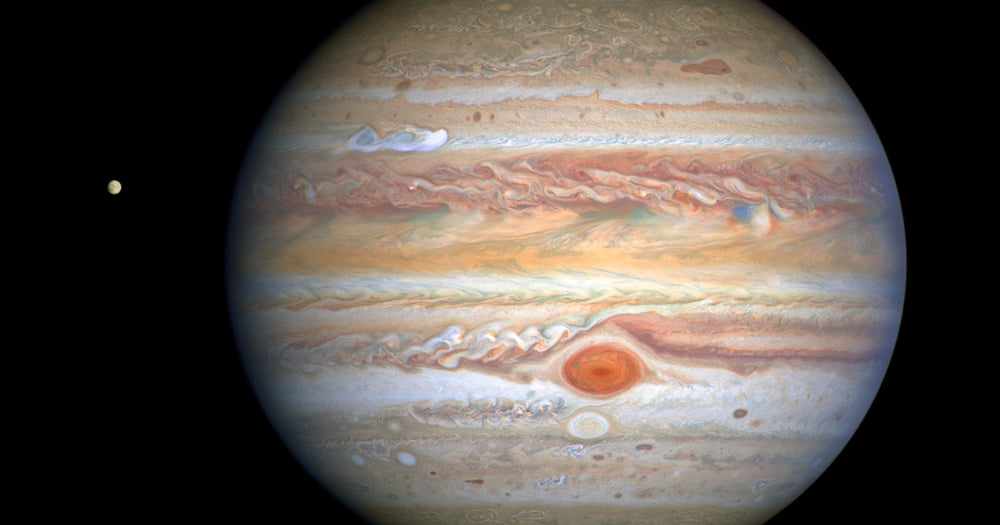How Long Does It Take to Get to Jupiter
Jupiter, the largest planet in our solar system, with its awe-inspiring size and mysterious atmosphere, has always captivated our imagination. If you've ever wondered about the time it takes to reach this gas giant, this article will provide insights into the journey and the factors that influence travel time.
Understanding the Distance to Jupiter
Before diving into the specifics, let's grasp the vastness of space and the enormous distances involved in interplanetary travel. Jupiter is located, on average, about 778 million kilometers (484 million miles) from the Sun. To put this into perspective, it is more than five times the distance between Earth and the Sun, which is about 149.6 million kilometers (93 million miles).
Traveling to Jupiter with Current Technologies
With current technologies, the time it takes to reach Jupiter depends on various factors, including the launch window, spacecraft speed, trajectory, and the use of gravity assists. On average, a direct mission to Jupiter using conventional propulsion systems would take approximately 2 to 3 years.
However, most interplanetary missions to Jupiter utilize gravity assists from other celestial bodies to increase speed and reduce travel time. By utilizing the gravitational pull of planets like Earth, Venus, or even multiple gravity assists, spacecraft can slingshot around these planets to gain momentum and adjust their trajectory, ultimately reaching Jupiter in a shorter duration.
Historical Missions to Jupiter
Several missions have been launched to study Jupiter up close, providing valuable insights into the planet's atmosphere, magnetic field, and its intricate system of moons. The historic NASA missions, Pioneer 10 and Pioneer 11, launched in 1972 and 1973 respectively, were the first to visit Jupiter. Pioneer 10 took approximately 2 years and 9 months, while Pioneer 11 reached Jupiter in approximately 2 years and 5 months.
One of the most iconic missions to Jupiter is NASA's Voyager program. Voyager 1 was launched in 1977 and Voyager 2 in the same year. Voyager 1 took approximately 1 year and 9 months to reach Jupiter, while Voyager 2 arrived at the gas giant after approximately 2 years and 4 months. These missions provided stunning images and data about Jupiter and its moons, revolutionizing our understanding of the planet.
Future Missions and Possibilities
With the advancements in technology and space exploration, future missions to Jupiter hold great promise for further discoveries. NASA's Juno mission, launched in 2011, arrived at Jupiter in 2016 after a journey of nearly 5 years. Juno is currently orbiting Jupiter and studying its magnetic field, composition, and atmosphere. The insights gained from Juno's mission are invaluable in unraveling the secrets of this massive planet.
Exploring Jupiter's Marvels
Jupiter, with its massive size and intriguing features, offers a wealth of wonders waiting to be explored. Let's delve into some of the captivating aspects that make Jupiter a destination of immense scientific interest.
Jupiter's Mighty Atmosphere
One of Jupiter's most distinctive features is its thick and dynamic atmosphere. Filled with swirling clouds and storms, including the famous Great Red Spot, Jupiter's atmosphere is a subject of intense study. Understanding its composition, weather patterns, and the interactions between atmospheric layers can provide valuable insights into planetary atmospheres and the dynamics of gas giants.
The Great Red Spot and Other Storms
The Great Red Spot is a massive storm on Jupiter that has been observed for centuries. It is a swirling vortex that is larger than Earth and has been raging for at least 300 years. Studying this iconic storm and other atmospheric disturbances on Jupiter helps scientists explore the dynamics of storms and the mechanisms behind their longevity.
Jupiter's Magnetosphere
Jupiter possesses a powerful magnetic field, even stronger than Earth's. Its magnetosphere extends far into space and interacts with the planet's surroundings. This interaction creates awe-inspiring auroras, similar to Earth's Northern and Southern Lights, but on a much grander scale. Investigating Jupiter's magnetosphere provides valuable insights into the complex relationship between a planet and its magnetic field.
Jupiter's Moons and Their Mysteries
Jupiter has an extensive family of moons, with over 80 known satellites. Four of its largest moons, known as the Galilean moons—Io, Europa, Ganymede, and Callisto—are of particular interest. These moons exhibit a diverse range of characteristics, including volcanic activity on Io, a subsurface ocean on Europa that could harbor life, and Ganymede, the largest moon in the solar system. Studying these moons helps us understand the formation of planetary systems and the potential for habitable environments beyond Earth.
Future Missions and Discoveries
As our thirst for knowledge about Jupiter continues to grow, future missions are being planned to unlock more of its mysteries. NASA's Europa Clipper mission, set to launch in the 2020s, will investigate the habitability of Europa by exploring its subsurface ocean and potential for life. This mission will provide unprecedented insights into the conditions and possibilities for life on one of Jupiter's intriguing moons.
The Never-Ending Quest for Knowledge
The journey to Jupiter may take several years, but the discoveries and insights gained from these missions are immeasurable. Exploring Jupiter's atmosphere, storms, magnetosphere, and moons offers profound insights into the formation and dynamics of our solar system. Each mission takes us one step closer to unraveling the mysteries of Jupiter and deepens our understanding of the vast wonders of our universe.
Conclusion
In conclusion, the time it takes to reach Jupiter varies depending on several factors, including the trajectory, spacecraft speed, and the use of gravity assists. With current technologies, a direct mission to Jupiter would take around 2 to 3 years. However, utilizing gravity assists from other planets can significantly reduce travel time. Historical missions like Pioneer and Voyager paved the way for our understanding of Jupiter, and ongoing missions like Juno continue to provide remarkable insights. As we continue to explore and study Jupiter, we unveil the wonders of our solar system, expanding our knowledge of these magnificent celestial bodies.

